Owned by one of the longest serving silk weaving families in Hanoi’s Van Phuc silk village, Trieu Van Mao silk factory produces high quality silk fabrics and silk products.
Nguyen Thi Tam, the daughter-in-law of Trieu Van Mao and now the owner of the factory, said that initially, her husband's family produced silk at home until 1964. Then all of the village’s households created Van Phuc Textile Cooperative to produce silk with materials supplied by the state for export to Eastern Europe. In 1986, when the products could no longer be exported, the cooperative was in danger of dissolving. That was when artisan Mao was assigned half of the machinery and production space to continue the village's traditional craft.
“At that time, my family also faced difficulties because Van Phuc villagers had no experience in doing business. My father-in-law stayed at home and continued working in his workshop to keep his job. The rest of the family had to make money as well as supporting the silk production,” Tam said.
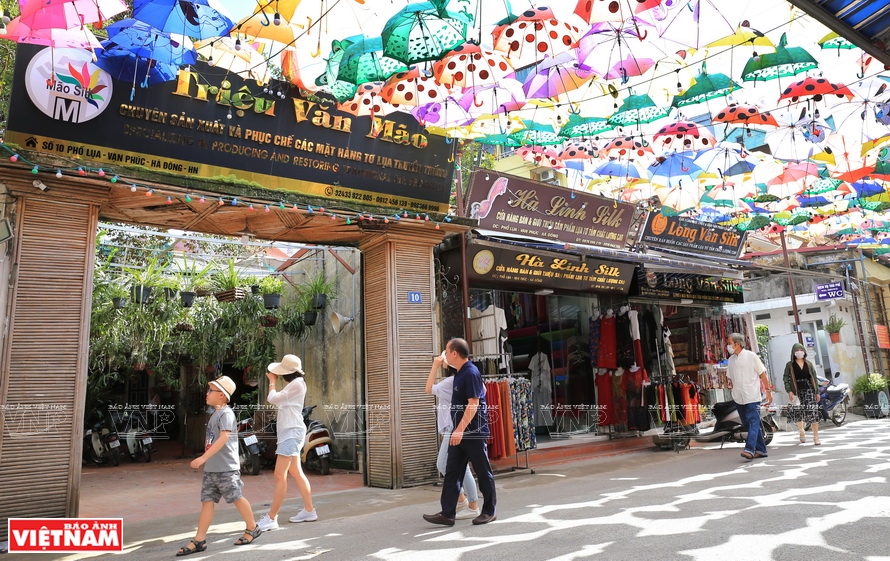
Trieu Van Mao family has been making silk products for a long time.
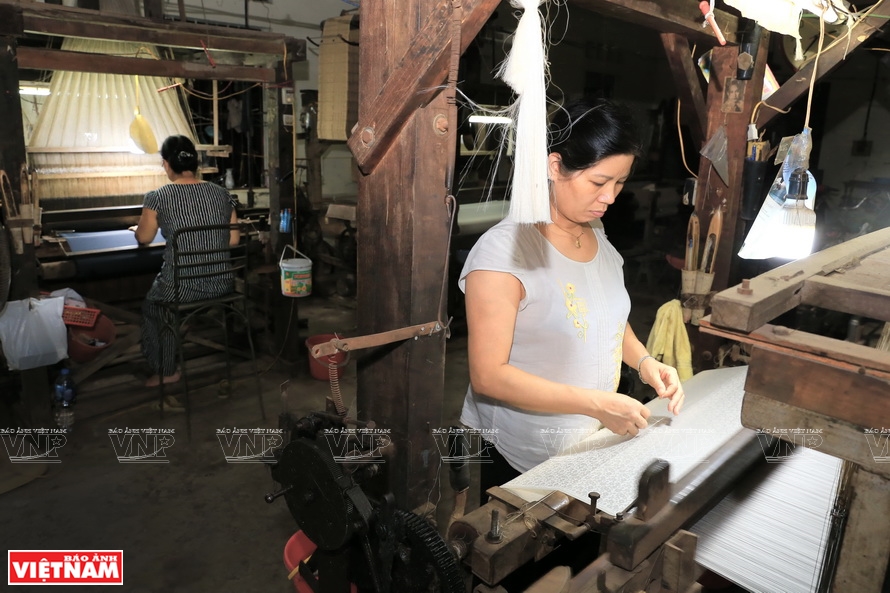
Weaving silk at Trieu Van Mao silk factory.
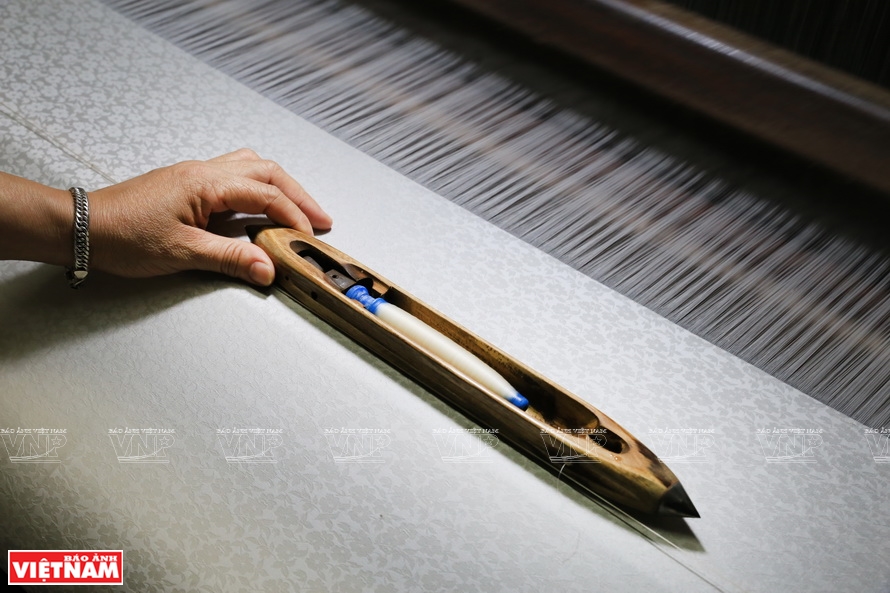
A spindle of a silk loom.
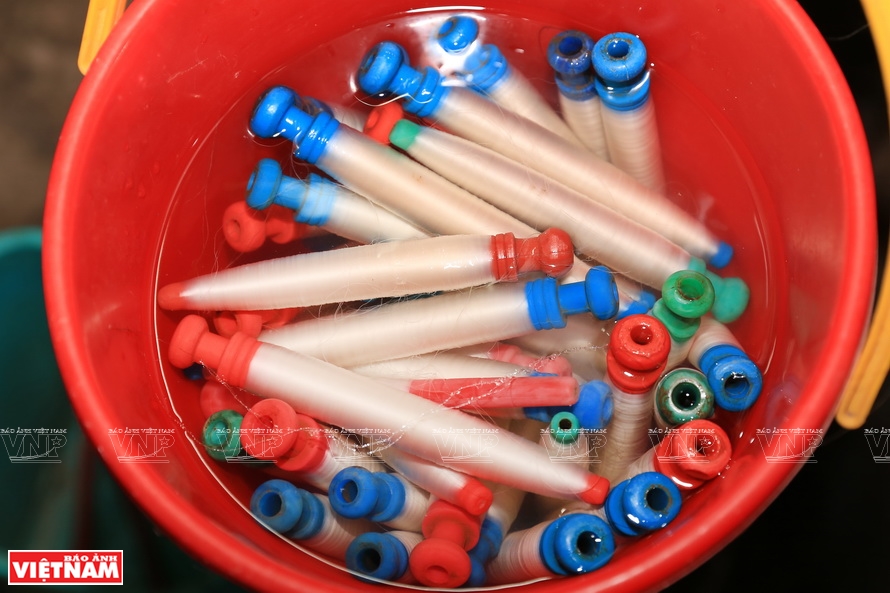
Silk is stored in water before weaving.

The manual spinning reels are still used at Trieu Van Mao silk factory.
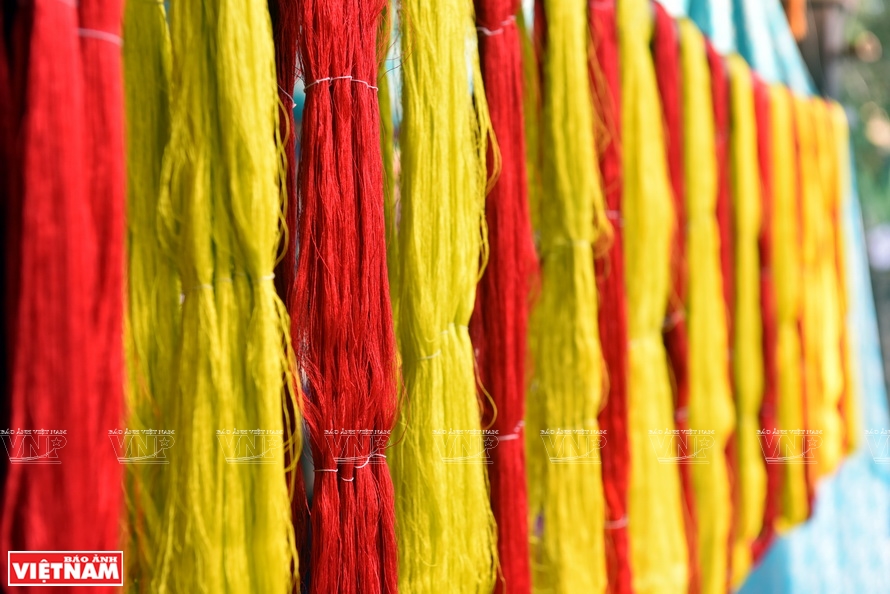
Trieu Van Mao’s silk materials are imported from Lam Dong.
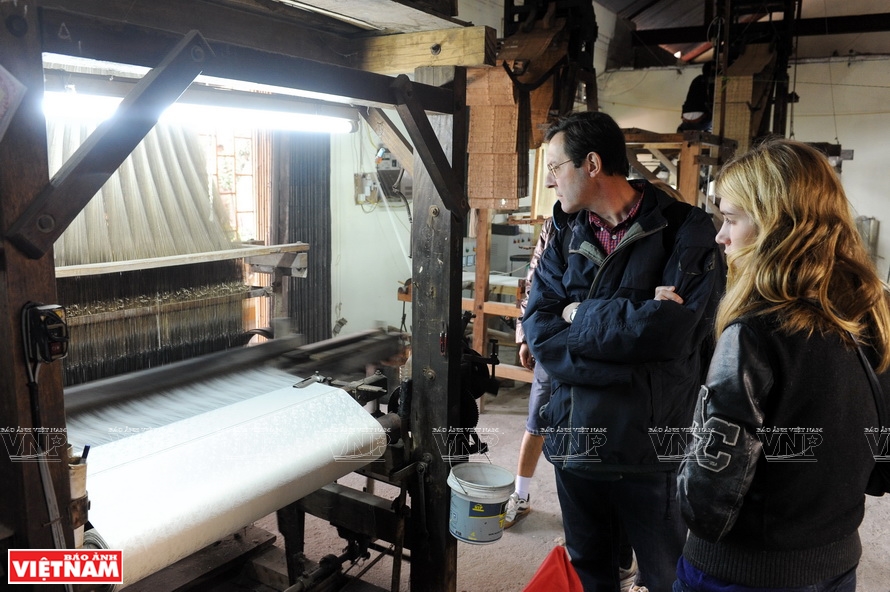
Foreigners visit Trieu Van Mao silk factory.

Foreign visitors discover the ancient silk manufacturing process.
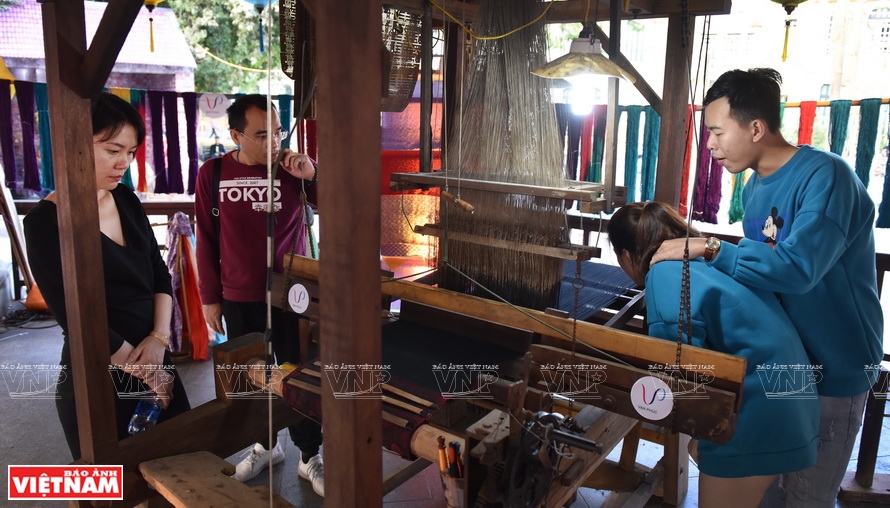
Visitors take a look at the ancient loom of Trieu Van Mao family.
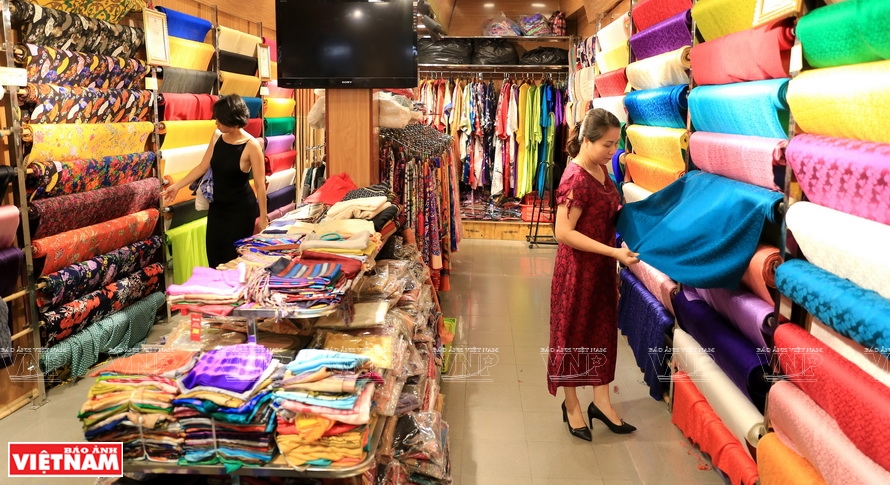 A customer looks for Trieu Van Mao silk products in Hanoi. A customer looks for Trieu Van Mao silk products in Hanoi. |
To continue with the silk weaving business, in 1993, Tam quit her job to help continue their family's long tradition. At that time, Mao's family only produced their own distinct fabric called van silk, which is a special kind of silk with smooth flowers on the silk surface. Tam told her father-in-law that if he wanted to maintain the production of silk products, he needed to produce two-color silk products with prices affordable to everyone. Her family then started to produce silk products made with 70% original silk yarn and 30% glossy silk yarn. This product was then bought by a lot of buyers and was even exported to Eastern Europe.
Tam said that in the past, her family used to import silk materials from Vinh Phuc. About 5 years ago, after a trip to Lam Ha, Bao Loc (Lam Dong) organized by the Department of Industry and Trade of Hanoi, they made connections with mulberry farms to raise silkworms and switched to importing raw materials from Lam Dong to produce higher quality products.
From Lam Dong silk fibers, they are woven into a rustic cloth, then cooked to soften the material and then dyed. It is interesting that the factory still produces van silk. The production of van silk requires more stages than other silk fabrics. It requires the perseverance of the workers. To keep the weaving craft, the Trieu Van Mao silk factory also provides vocational training for young people. The training has continued even though Trieu Van Mao has passed away.
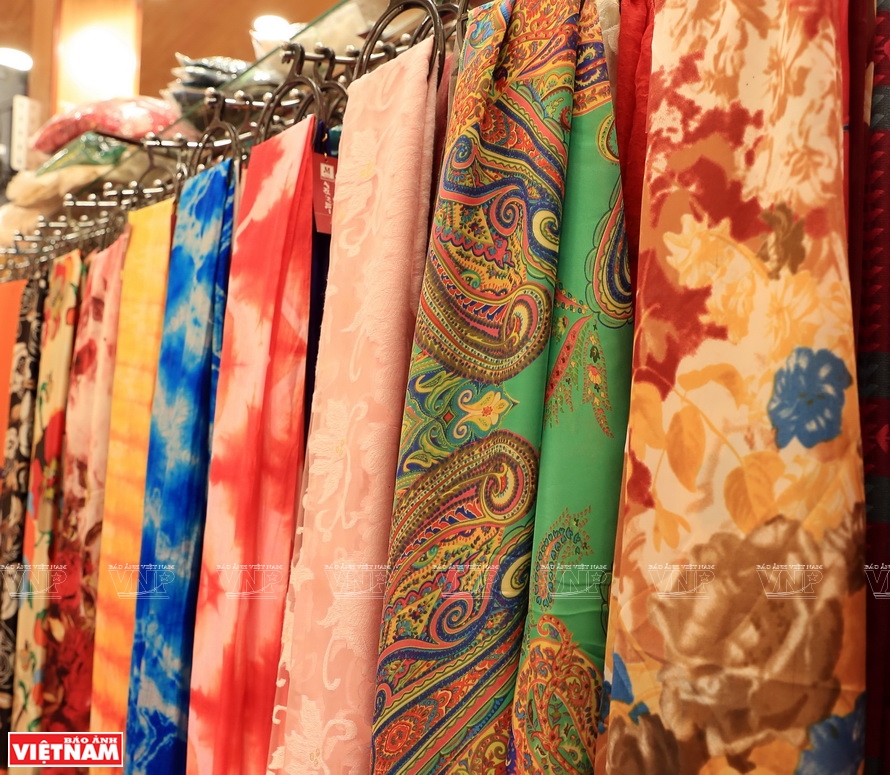
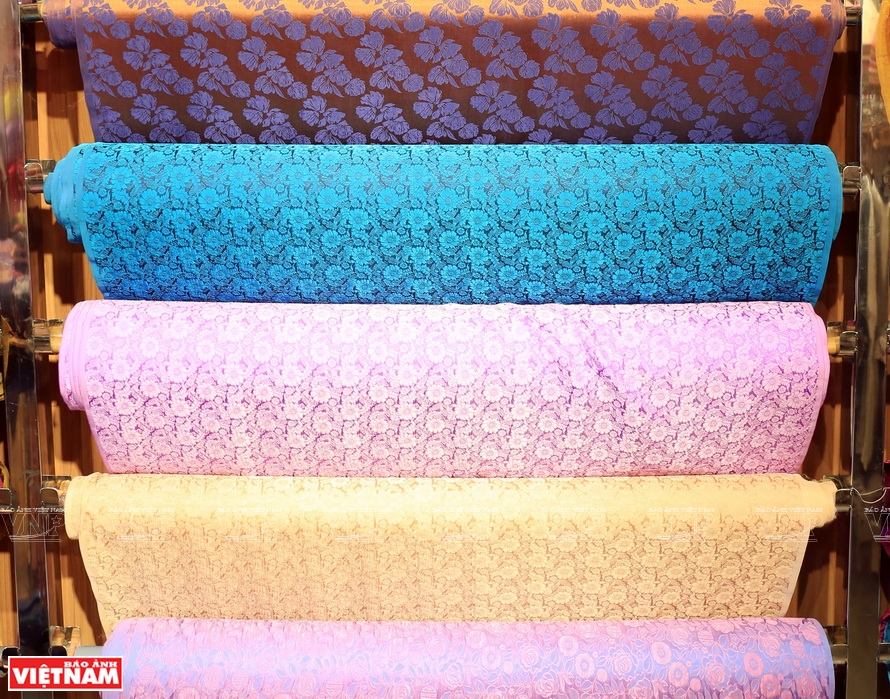
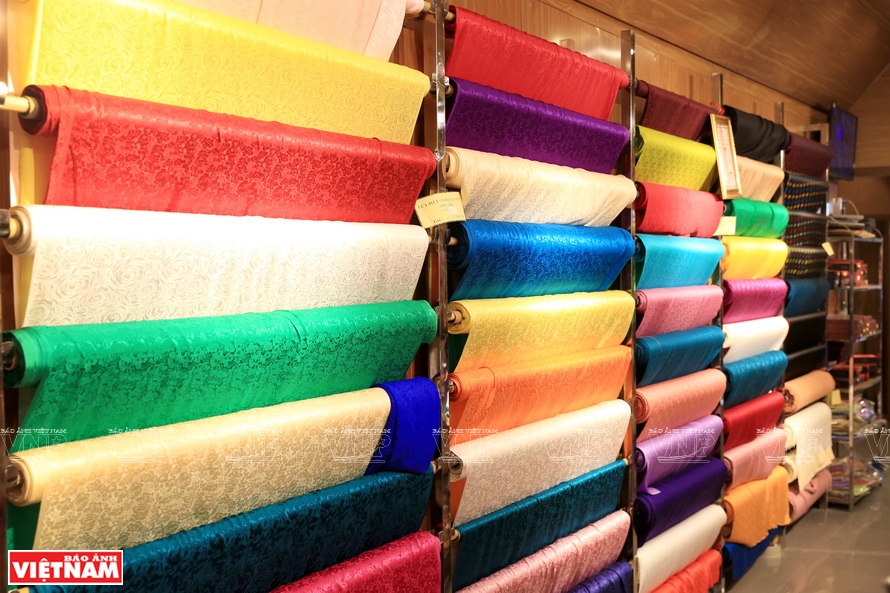
The three products of Trieu Van Mao silk factory which are satin, plain silk and van silk were given three stars in the One Commune One Product (OCOP) program by the People's Committee of Hanoi.
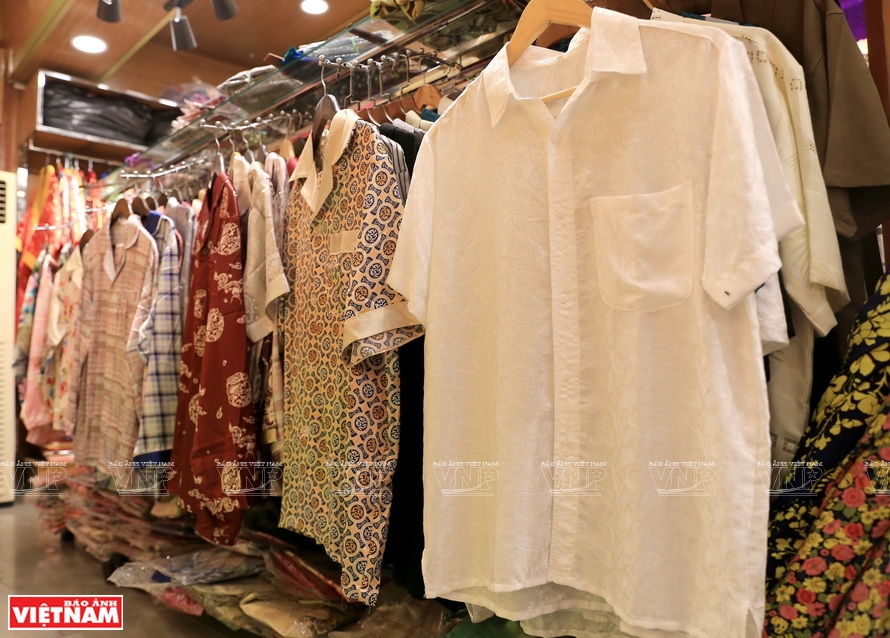
Silk products for men.
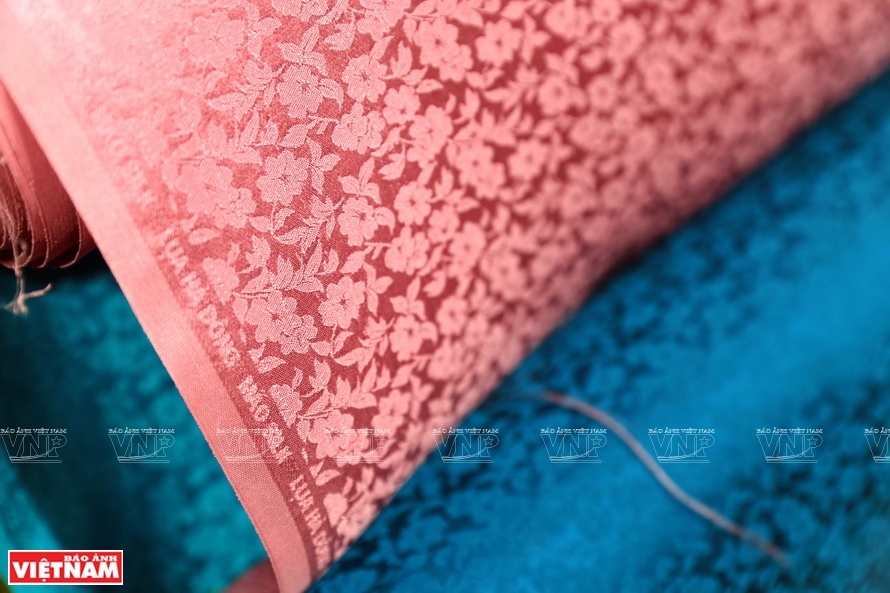
The Logo "Maosilk" on silk products.
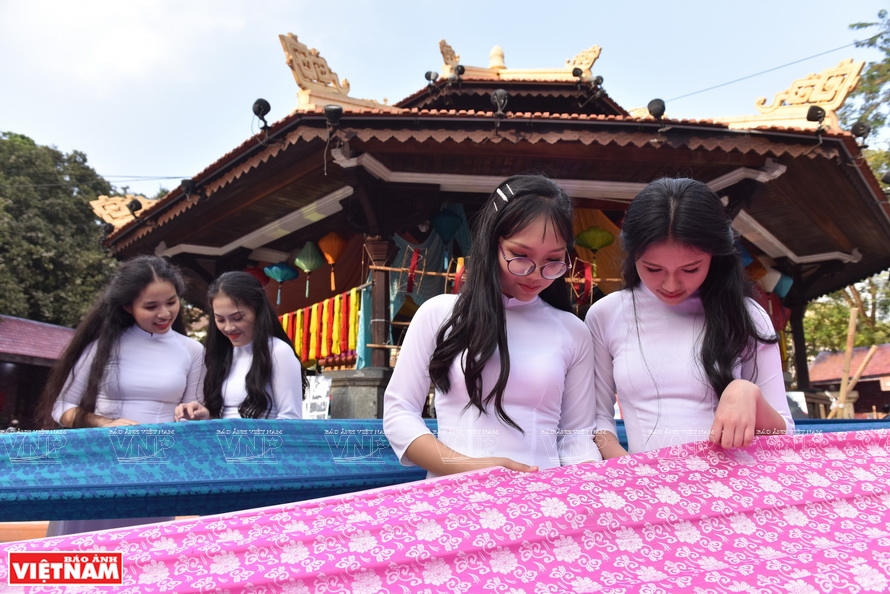
Young girls in pure white silk ao dai. |
The factory not only produces diverse silk fabrics such as satin, plain or van silk, but also provides products as gifts and daily use products such as clothes, towels and ao dai, the traditional Vietnamese dress. In 2019, The three products of Trieu Van Mao silk factory which are satin, plain silk and van silk were given three stars in the One Commune One Product (OCOP) program by the People's Committee of Hanoi.
In addition, to develop more product brands, Trieu Van Mao silk factory coordinates with travel companies in Hanoi and tourism departments of some provinces to bring tourists to visit Van Phuc silk village to learn about weaving and silk products
Story: Ngan Ha - Photos: Thanh Giang